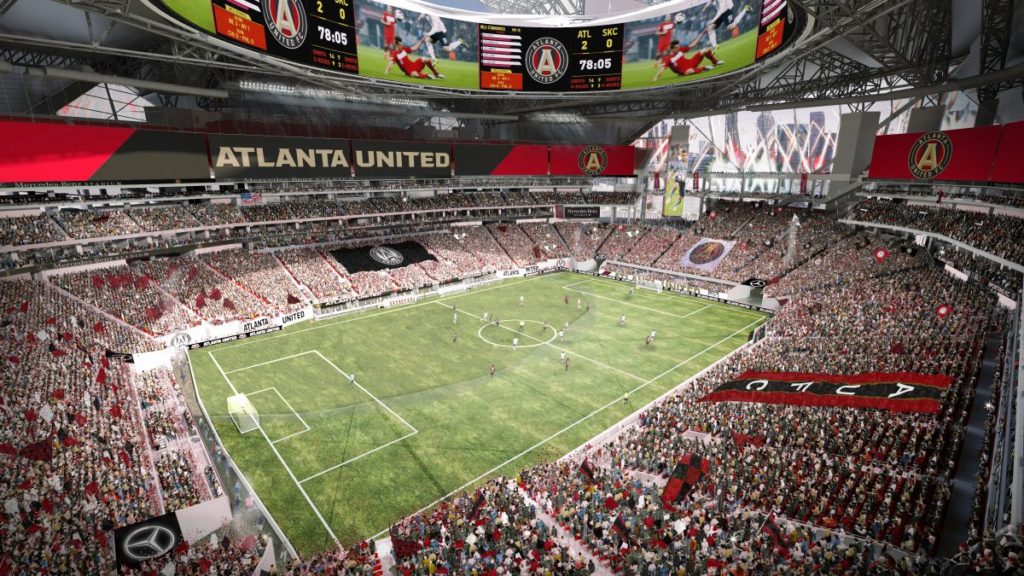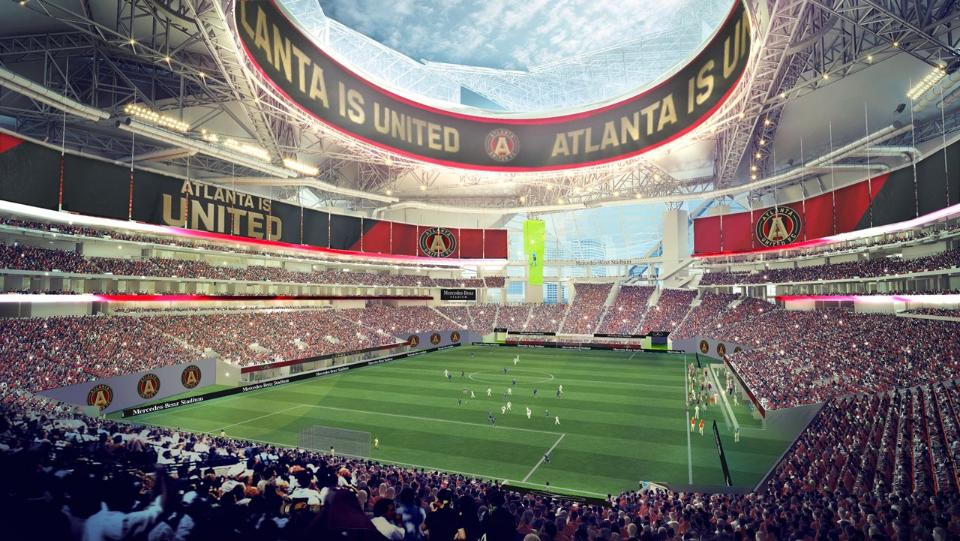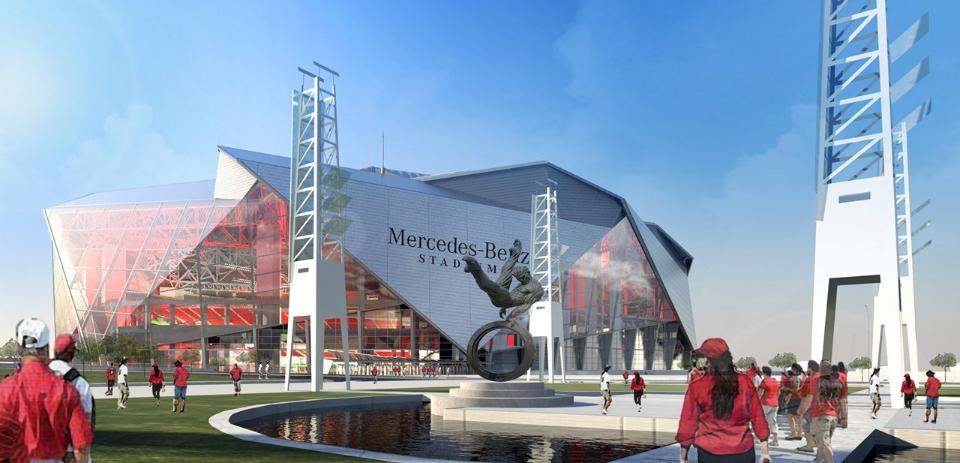The year 2017 is still a few months away, but signs of its arrival are popping up for the Atlanta United FC. This week the MLS announced that Atlanta—along with Minnesota—will participate in an expansion draft on December 13, marking an important milestone as both teams build their first rosters.
The United’s roster, however, is not the only thing Atlanta is building. Currently under construction, Mercedes-Benz Stadium is set to open next year as the home of both the United and the NFL’s Atlanta Falcons.
Mercedes-Benz Stadium should continue to receive considerable attention as its completion draws closer. As was noted last fall in a football-centric story on our sister site, Football Stadium Digest, the size and amenities of the stadium are gaining attention in the NFL. While Falcons’ games will have a capacity just north of 70,000, Mercedes-Benz Stadium will have the capability to expand to host over 80,000 fans for larger events such as the Super Bowl.
A Super Bowl is indeed in the stadium’s future, so its status within the football world is already soaring. However, the technology behind Mercedes-Benz Stadium will allow it to be a standout host for soccer.
Ongoing stadium searches by other MLS teams—the New England Revolution come to mind—reflect some of the challenges behind hosting both football and soccer at the same facility. Even if an NFL stadium is state-of-the-art, it may prove to be too large for soccer and the process of converting a standard football field to a regulation soccer pitch can become taxing.
In the case of Mercedes-Benz Stadium, the capacity will easily drop for soccer. To create a more soccer-conducive capacity of roughly 29,000, the stadium will employ a series of mechanical curtains to close off certain sections, including the upper deck.
For the playing surface, planners originally considered installing a natural grass surface, but ruled it out over concerns that it would not grow inside the retractable-roof stadium. Instead, the decision was made to install a GreenFields MX 3-Star Turf System.
While allowing for easier adjustments between soccer and football, the turf is designed to feel and perform in fashion that replicates a natural surface. The turf is placed on top of a four-layer system, followed by performance sports, crushed stone base, and a liner at the bottom.
Early indications are that fan support for the Atlanta United FC will be strong. In August, it was announced that the team had already converted 22,000 of 31,000 deposits into season ticket plans, setting a new MLS record. Additionally, the club seating had sold out in eight of the stadium’s 10 sections for soccer.
The only question left in regard to Mercedes-Benz Stadium is when it will open for soccer. The latest reports indicate that it will not open until June 1, 2017, thereby forcing the United to find a temporary venue. No decision has been announced regarding where the United will begin the season, nor has it been determined when the United will move into Mercedes-Benz Stadium
In June, we took a closer look at some of the potential options, including two football stadiums in Georgia Tech’s Bobby Dodd Stadium and the University of Georgia’s Sanford Stadium. Sanford Stadium has a history with soccer—it hosted matches during the 1996 Olympics—but placing the United there would force fans in Atlanta to make the nearly 75-mile drive to Athens, and it is far larger than its counterpart at Georgia Tech. (92,000 seats compared to 55,000).
The coming months should yield more answers about when the United will finally set up shop in Mercedes-Benz Stadium. Once that first game comes, Mercedes-Benz Stadium should establish itself as not only a fine football stadium, but also one of the latest breakthroughs in MLS facilities.
Renderings courtesy Mercedes-Benz Stadium.
This article first appeared in the weekly Soccer Stadium Digest newsletter. Are you a subscriber? Sign up here for your free subscription!



